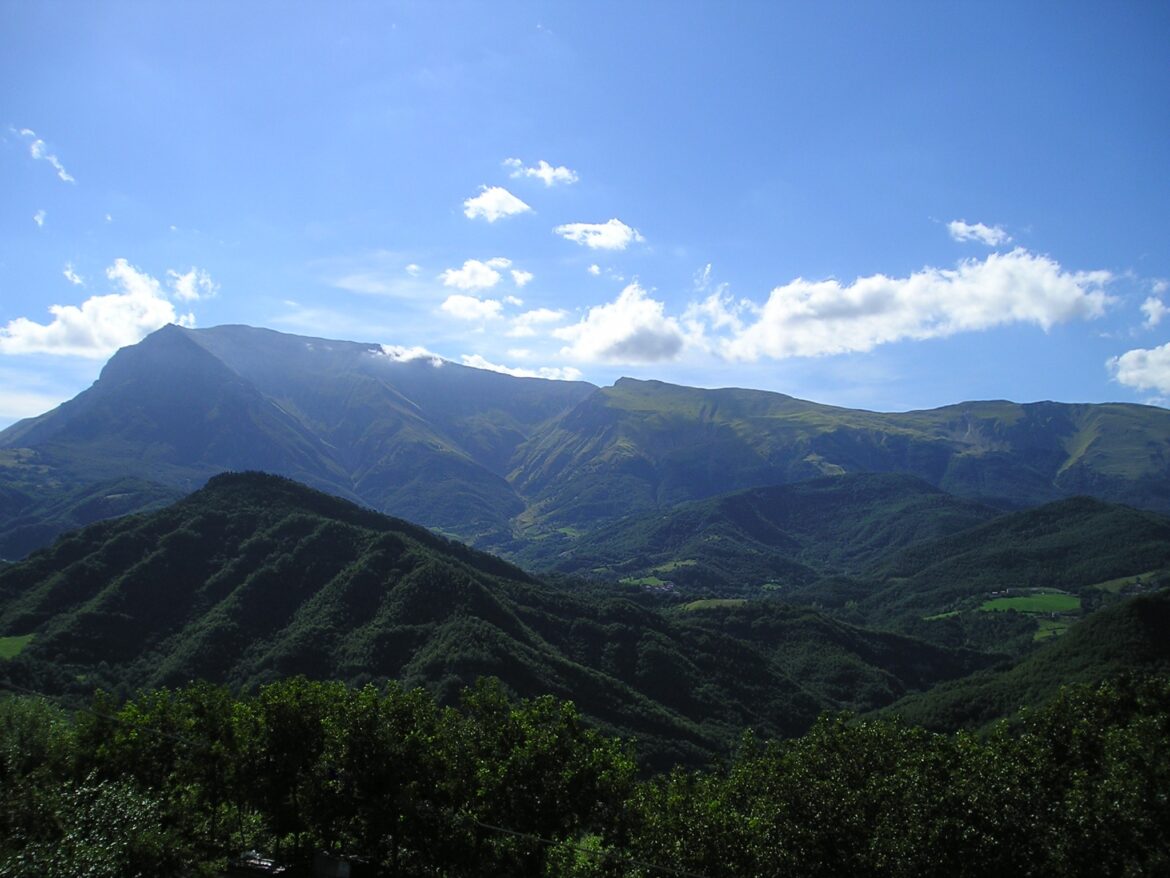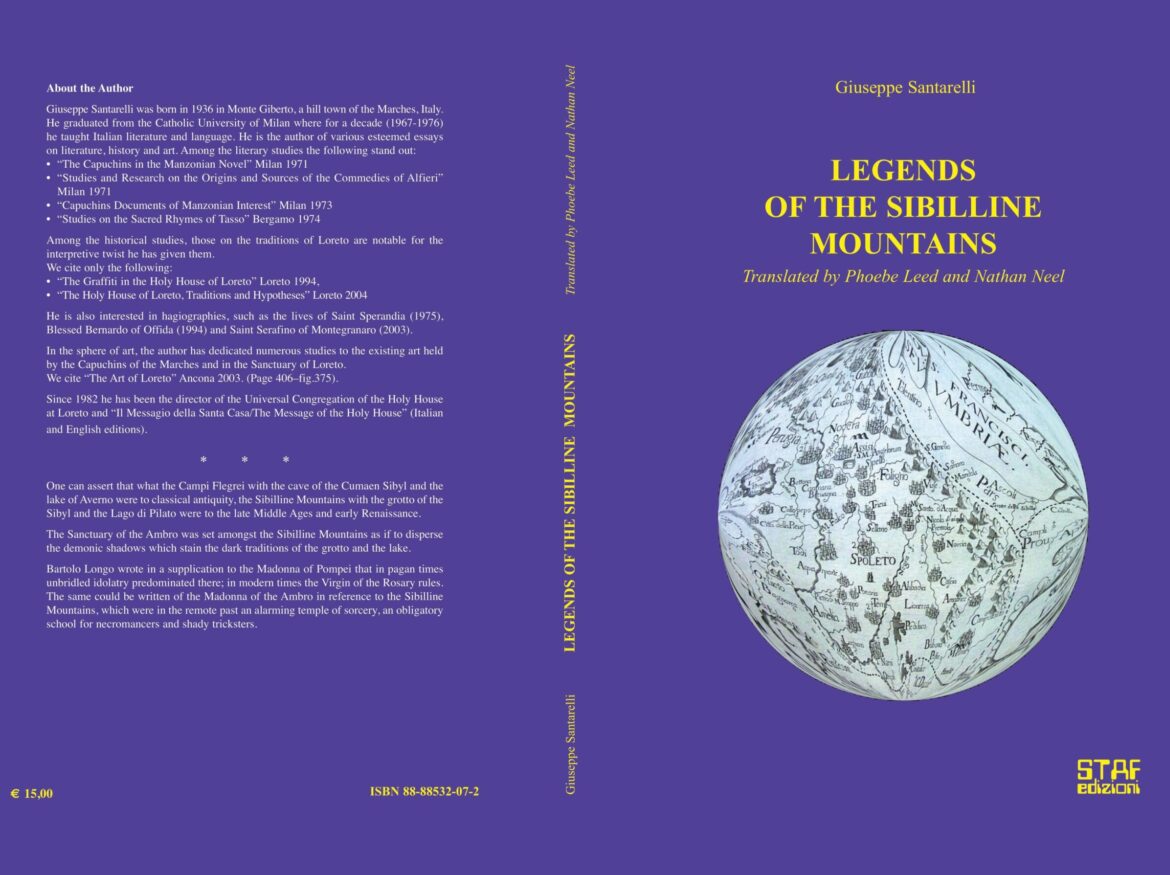Rondini Press
Le Marche, Italy, The Sibillini Mountains, Ascoli Piceno

Monte Vettore
‘The Marches’ is a plural. The north has the tint of Romagna; the Tuscan and Umbrian influence is manifested along the Apennine ridge; the province of Ascoli is an antechamber of Abruzzo and the Sabine region. Ancona, a seafaring city, is a place all its own. Even in so compact a space the language varies and has Tuscan, Umbrian, and Abruzzesi imprints according to location. Many diverse spirits and influences, manifested also in the landscape, seem to be distilled and interpenetrated in the central zone where Macerata, Recanati, Loreto, and Camerino arise… If you wanted to establish what is the most typical Italian landscape, you would have to point to Le Marche, especially Macerata and its surroundings. Italy altogether is a type of prism in which all the landscapes of the world seem to be reflected, putting in an appearance in moderate and harmonious proportion one to the other. Italy with its landscapes is a distillation of the world; Le Marche of Italy.
Guido Piovene, Viaggio in Italia
The Land of Piceno
The Life and Times of Le Marche, Italy

Le Marche, Italy—or Picenum as the Romans called it—is known for the enchanted Sibillini Mountains, vineyard covered hills, and the splendid Adriatic Coast. The Land of Piceno ranges from the earliest archeological traces of human settlements, through the Roman conquests, to the catastrophic earthquakes of 2016. Barbarian invasions, Italian communes, Napoleon, and Garibaldi connect here in a romantic landscape of astounding beauty and historical turmoil.
The fascination and heartbreak of Le Marche’s history is a living experience. The book displays the jewelry and weapons of the early Piceno culture, follows the circuitous routes of necromancers, brigands, and St. Francis. Savor the wines and olives, renowned since Roman times, in Renaissance piazzas and hilltop fortress towns. Visit the partisan battlegrounds of WWII and the Grotto of the Sibyl, where medieval knights risked eternal damnation. These are stories, some personal, of breathtaking Le Marche!
Phoebe Leed and Nathan Neel are writers living in Cambridge, Massachusetts when not in Montegallo, Ascoli Piceno.
Translations from Italian
Legends of the Sibilline Mountains
By Giuseppe Santarelli

Legends of the Sibilline Mountains is a small book about an obscure corner of Italy and an equally obscure backwater of world literature. And yet the subjects it touches upon—amongst them, the roots of literature in popular consciousness, the intimations of Christian existentialism, the absorption of pagan traditions into Christianity—reach far and wide. Goddess worship, necromantic rites, the death of Pontius Pilate, Benevenuto Cellini, Goethe’s “Faust,” Wagner’s “Tannhauser”…they all connect here in a real place of strange geological formations and magical beauty.
The Sibilline Mountains, dividing Le Marche from Umbria, were “celebrated in the 14th and 15th centuries throughout all Europe for magical fairytales and necromantic initiations,” according to the author, Giuseppe Santarelli. In the most famous of these tales a mysterious Sibyl inhabits a grotto devoted to the pleasures of the flesh, luring knights to eternal damnation. The Lago di Pilato, a nearby mountaintop lake where Pontius Pilate’s body was said to have been cast, later became a destination for demonic rituals. In a witty and personal tone Santarelli, director of the Sanctuary of Loreto, discusses the origins of the myths in folklore, their literary transformations through the centuries, and the archeological traces they left behind.
The Blood of the Sibillini
By Francesco Eleuteri

“…an homage to the territory (the city of Ascoli Piceno and the Sibillini Mountains) which, with the pretext of a story made of fictional events and personalities, stands out as the real protagonist, with precise historical references.” Corriere Adriatico
“…a lucid description of the perverse and inconsistent dynamics that dwell within human beings and guide their actions.” Il Resto di Carlino